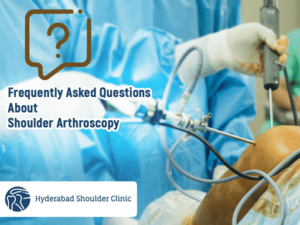Rotator cuff surgery is often necessary for individuals suffering from severe shoulder injuries who do not respond to conservative treatments.
Indications for a Rotator Cuff Surgery
- Persistent Pain and Dysfunction: Surgery is typically recommended when shoulder pain persists during rest or at night, especially if it has not improved after 3 to 4 months of physical therapy. If the pain significantly interferes with daily activities or quality of life, surgical intervention may be warranted.
- Complete Tears: A complete rotator cuff tear often necessitates surgery to restore function and alleviate pain. This is particularly true for active individuals who rely on shoulder strength for sports or work.
- Lack of Improvement with Conservative Treatment: If a patient has undergone physical therapy for several months without noticeable improvement in strength or function, surgery becomes a viable option.
- Acute Injuries: Recent injuries that result in significant tears may also require surgical repair to ensure proper healing and function restoration.
Types of rotator cuff surgeries

Arthroscopic Repair: This minimally invasive technique involves small incisions and the use of an arthroscope to visualize and repair the torn tendon. It generally leads to quicker recovery times compared to open surgery.
Open Tendon Repair: In cases of large or complex tears, open surgery may be necessary, allowing direct access to the tendon for repair. This method may involve detaching shoulder muscles to reach the damaged area.
Recovery from Rotator Cuff Surgery

Recovery from rotator cuff surgery typically takes 4 to 6 months, although individual experiences can vary based on several factors, including the severity of the tear and adherence to rehabilitation protocols.
How do you build strength after your rotator cuff surgery?
Initial Phase (First 6 Weeks):
- Focus on pain management and tissue healing.
- Passive range of motion exercises may begin shortly after surgery.
Intermediate Phase (Weeks 7-14):
- Gradual introduction of active movements and functional range of motion exercises.
- Patients may start to engage in light activities as tolerated.
Strengthening Phase (Weeks 15-22):
- Emphasis on strengthbuilding exercises.
- Patients typically return to daily activities during this period.
Full Recovery (4-6 Months):
- Most patients achieve significant strength and range of motion by this time.
- For some, particularly those with larger tears or complications, recovery may extend to 6 to 12 months.
Factors Influencing Recovery from Rotator Cuff Surgery
-
- Severity of the Tear: Larger or more complex tears often require longer recovery times.
- Age and Overall Health: Younger patients without preexisting shoulder stiffness tend to recover faster.
- Rehabilitation Commitment: Adherence to prescribed physical therapy is crucial for optimal recovery outcomes.
- Building strength after rotator cuff surgery is a critical part of the rehabilitation process. Here’s a structured approach to help you regain strength safely and effectively.
- Follow Your Doctor’s Advice: Always consult with your physician or physical therapist before starting any exercise program post-surgery.
- Start Slowly: Begin with light resistance and gradually increase as your strength improves.
- Frequency: Aim for 23 sessions per week, allowing rest days in between to prevent irritation.
- WarmUp: Always perform warmup stretches before engaging in strengthening exercises.
- Strengthening exercises
-
-
- These exercises can typically be introduced around 4 to 6 weeks postsurgery, depending on your recovery progress:
- Wall Slides: Stand with your back against a wall and slide your arms up and down to improve mobility.
- External Rotation: Use a resistance band anchored at waist height. Keep your elbow close to your body and rotate your forearm outward.
- Dumbbell Elevation and Abduction: With light dumbbells, raise your arms straight in front of you (elevation) and to the side (abduction).
- Bent Row: Bend forward slightly and pull light dumbbells towards your chest, squeezing your shoulder blades together.
- Reverse Flys:Stand bent at the waist with light dumbbells in each hand. Raise your arms out to the side while keeping a slight bend in the elbows.
- Prone Abduction:Lie face down on a bench or bed and lift your arm out to the side to strengthen the shoulder muscles.
- Band Diagonals:Attach a resistance band low on one side and pull diagonally across your body to strengthen various shoulder muscles.
-
- Stretching Exercises
-
- Incorporate these stretches to maintain flexibility and prepare for strengthening:
- Crossover Arm Stretch: Pull one arm across your chest while holding it with the opposite arm.
- Doorway Stretch: Place your hands on a door frame and lean forward gently to stretch the shoulder muscles.
Advice from Hyderabad Shoulder Clinic about strength building after Rotator Cuff Surgery
Apply ice after exercises to reduce inflammation. Progress may be slow; focus on gradual improvement rather than rushing through exercises. By adhering to these guidelines and incorporating these exercises into your rehabilitation routine, you can effectively build strength in your shoulder following rotator cuff surgery. Always prioritize safety and consult with healthcare professionals throughout your recovery journey. For more information, please visit our website https://hyderabadshoulderclinic.com/ or contact us at +91 9959588389 or shoulderandsportsclinic@gmail.com.





